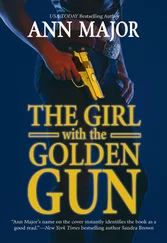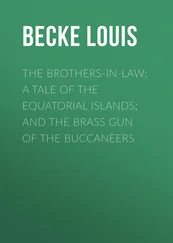There is evidence too that manufacturers don’t see crime as being an entirely negative phenomenon. Why else would the now-defunct Charter Arms Co. engrave the barrels of a brace of husband-and-wife revolvers with the names Bonnie and Clyde?
The gun industry has long contended that only a small percentage of guns are used in crime, while at the same time resisting efforts to document the true number and to identify the most popular crime guns by maker, model, and caliber. As of 1989, rather late in the computer revolution, the Bureau of Alcohol, Tobacco and Firearms at last became able to provide some rudimentary statistics on which guns turned up most often in federal traces. Reports from the new database have already battered the NRA’s “guns don’t kill” stance, proving beyond doubt that certain guns turn up during the commission of crime far more often than others. The company whose handguns were traced most often from January of 1990 to December of 1991, simply because of the sheer magnitude of its production, was giant Smith & Wesson. However, when the frequency of traces is compared with each company’s production, S.W. Daniel, the company that made Nicholas Elliot’s gun, shows a tracing rate far higher. By 1989 the company had produced some 60,500 handguns and an untold number of accessories, including silencers and machine-gun kits. It fondly advertised Nicholas’s gun, the Cobray M-11/9, as “the gun that made the eighties roar.”
Condemned by police, ridiculed even by those who sell it, the gun has been inordinately controversial ever since its initial design by Gordon Ingram, a California engineer and gunsmith who sought to make a cheap, reliable submachine gun for close military combat. How that gun went on to become a readily available mass-consumer product—something S.W. Daniel once even gave away free in a monthly contest—provides a clear example of the culture of nonresponsibility at work in America’s firearms industry. It is but one example of how this commercial ethos governed the gun’s progress from conception to its use as a murder weapon in a Virginia Beach classroom.
“We’ve got technology running amok,” said Col. Leonard Supenski, the Baltimore County firearms expert. “No gun manufacturer ever decided in its R-and-D process that the product it was developing might not have any useful purpose for society and might in fact harm society. When Gordon Ingram began production and eventually tried to get into the commercial market, I’m sure the thought never entered his mind. The people at SWD don’t give a damn who gets those guns.”
ON FRIDAY, DECEMBER 16, 1988, NICHOLAS Elliot awoke feeling ill. He had an ear infection and was taking medication for it, but that did not account for his malaise. He had made big plans for the day, and suddenly those plans seemed too big. The anxiety sickened him. “I didn’t feel like going to school,” he told Detective Adams. “But I knew I would get in trouble if I didn’t, so I went…. I was just so sick.”
He planned to bring his gun to school for the express purpose of scaring Billy Cutter, his tormentor, and at last getting some respect. He had bought the gun two months before, a Cobray M-11/9 semiautomatic pistol capable of firing thirty-two rounds before requiring the shooter to reload. His mother did not know about his acquisition. Nicholas told Adams he had hidden the gun in a bird cage, but Adams believed he probably kept it in his attic.
“I was scared,” Nicholas told the detective, “because I didn’t know how I would feel with a gun at school.”
He packed his backpack and caught his usual bus. He attended the first of his classes. “I was looking for him from the beginning,” Nicholas said. “I wasn’t angry… I wanted to scare him, to make him see how much of a wimp he was in front of everyone.”
During Nicholas’s ride to school, the knowledge of what he carried in his backpack and what he could do with it deeply frightened him. “I was scared,” he said. “I was looking for Billy, but I also was scared.”
At one point, he considered abandoning his mission. He could not find the boy and was surprised at the fear he felt walking around school with a gun. “I was kind of thinking about just hiding the gun and getting it later on… take it home and just leave it.”
“Just forget the whole thing?” Adams prompted.
“Well, sort of, yeah, I mean, I wasn’t planning to shoot them.”
Briefly he had imagined an alternative means of getting back at Billy Cutter. “I was thinking about having someone do something to him. Well, like, you know, beat him up and teach him not to pick on people. Just do something to him, you know. I wanted to scare him. That’s what I really wanted to do.”
THE BALTIMORE COUNTY POLICE SHOOTING RANGE occupies a wooded area just north of Towson, Maryland, where the broad six-lane strip roads of Baltimore city taper to rolling two-lane highways. I heard the range the moment I stepped from my car, the sound like something you would get if you put a microphone beside a package of microwave popcorn in midpop. The range was a flat plane carved from a hillside so as to leave an earthen cliff at one end, which serves as a backstop to keep stray rounds from bounding north into Baltimore County horse country. Colonel Supenski arrived carrying a gray attaché case and led me onto the range where a group of county corrections officers was undergoing pistol training. He asked their instructor to have the group stand down for a few minutes, even though he and I were headed for the far end of the range roughly one hundred yards away. His caution was a measure of the deep respect police officers have for the quirky dangers of bullets and guns. During my pursuit of Nicholas Elliot’s gun, I often observed a subtle dance that law-enforcement people do whenever an amateur in their midst handles a gun, whether the gun is loaded or not. As the gun shifts, they shift, but ever so slightly in an instinctive, drilled-in twitch meant to ensure that if an imaginary line were drawn outward from the muzzle, it would never intersect their bodies.
Supenski occupies an at-times uncomfortable position in the gun debate. On the one hand, he is a big fan of guns. I accompanied him to a gun show in Westminster, Maryland, one Sunday morning. Despite his constant contact with guns he still could not resist handling some of the handguns we encountered, especially the old collector’s guns and the “tricked out” competition guns with their scopes, compensators, and hand-checked grips. “I grew up in the era of the B westerns,” he told me. “Loved them, still love them. My single most prized possession is an original Colt single-action ‘cowboy’ gun. Nickel-plated, hand-engraved, ivory stock.” But the Colonel, as everybody calls him, also believes in reasonable controls to force a heightened level of responsibility in the sale and use of firearms. This has not won him many friends among the gunslingers of America. He received a lot of sober stares from dealers at the gun show. One pro-gun group twice threatened to kill him, prompting a mischievous female assistant to don a bulletproof vest before joining him for lunch. “If I want to go sit behind the wheel of a fifteen-foot powerboat, I’ve got to get certified,” Supenski said. “I’ve got to go through a nine-week course, take a take-home exam, and have a natural-resources exam, and go through every conceivable aspect of safe boating—to sit behind the wheel of a boat.” He pointed to a handgun. “To buy one of those I don’t have to do squat. Now you tell me that’s sane.”
His is a pragmatic stance. He worries that irresponsible behavior by gun dealers, manufacturers, and the National Rifle Association may soon lead to truly restrictive controls well beyond the simple, yet crucial, regulations sought by moderate gun-control proponents, such as the 1993 Brady law’s mandatory waiting period and background checks. “My concern as a person who enjoys the shooting sports is that unless some reason comes in, things will get worse, and when that happens, those three million people in the NRA are going to find out what the fifteen million in the AARP [American Association of Retired Persons] are all about. Right now the other side hasn’t been mobilized.”
Читать дальше
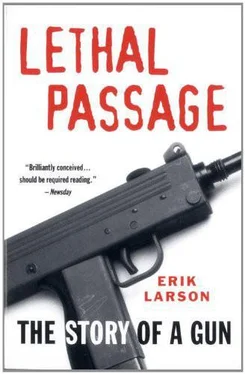
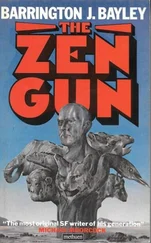
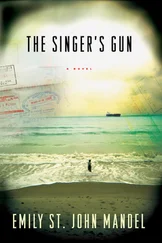

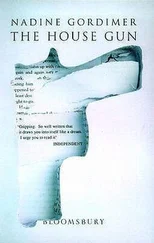

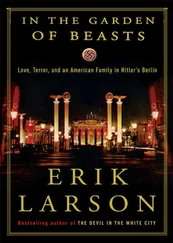

![Ричард Деминг - Whistle Past the Graveyard [= Give the Girl a Gun]](/books/412176/richard-deming-whistle-past-the-graveyard-give-t-thumb.webp)
